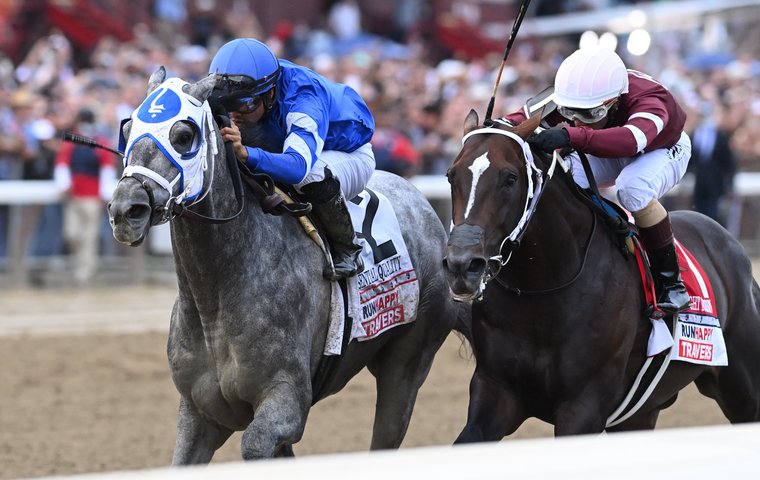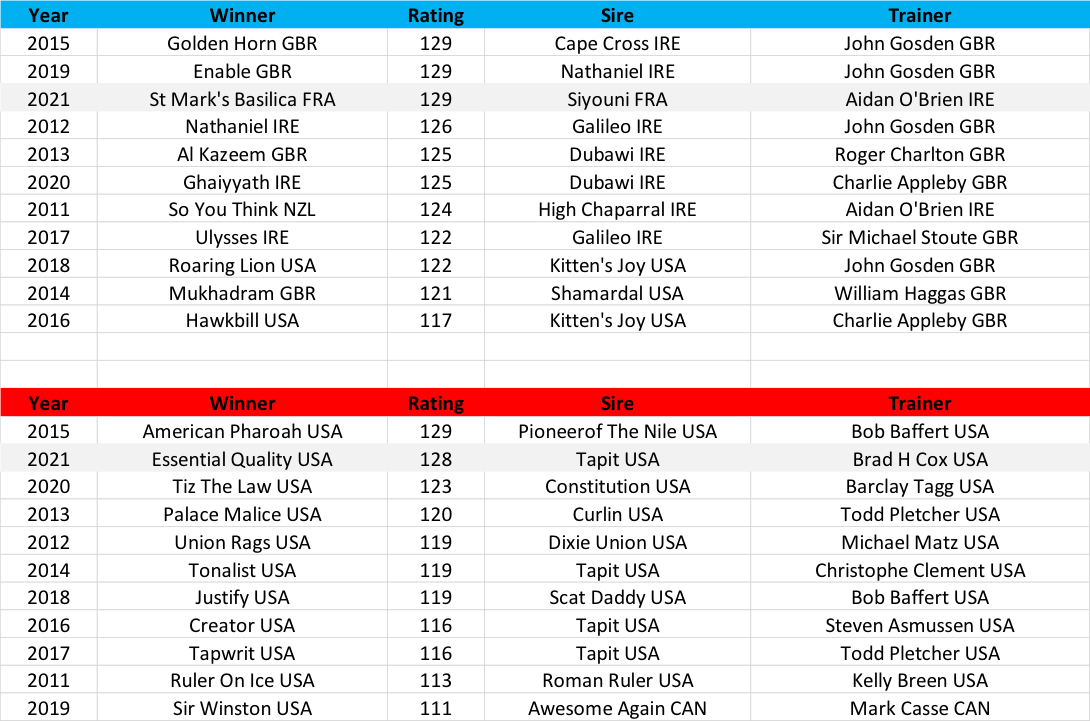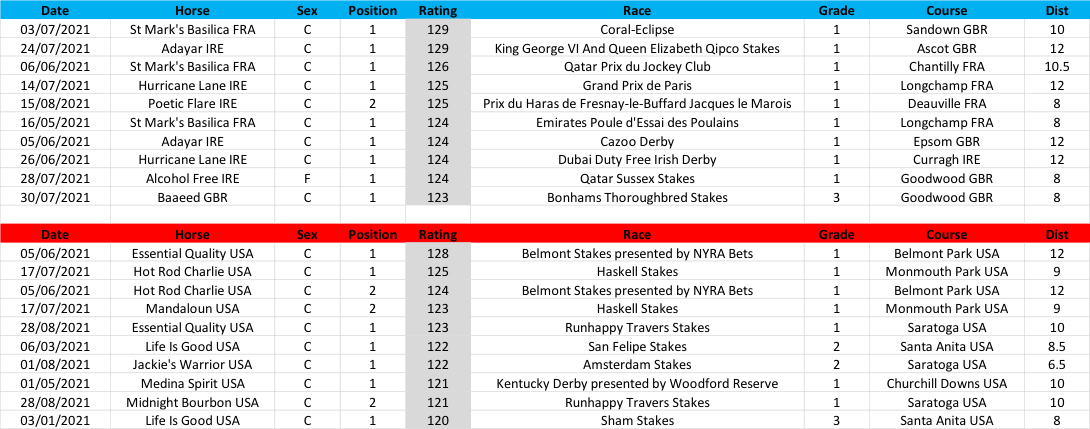
Each generation of racehorses that rises to compete in Group and Graded races round the world is the peak of the pyramid. Some years that peak is relatively low but wide; other years it is tall but narrow; this year it is both tall and wide.
The championship races of autumn on both sides of the Atlantic always rebuild and reorder the peak of the pyramid somewhat, of course, but by now we know the raw materials available for construction. In 2021, these equine building blocks are in place. But which way will they be fitted in?
Each week, the TRC Computer Race Ratings algorithm re-computes the value of all the races in the database to build this pyramid anew. Rating horses – known as ‘handicapping’ in various parts of the world, like Europe – is the systematic translation of the results of races to a numeric scale design to express a hierarchy:
Given some guiding principles to achieve the task – described here – the computer can use modern machine learning to refine its approach to the task so that it is more efficient.
It can learn, for instance, how the value of a length in rating points should vary according to the course, distance, surface and field size of the race. As you go back from the winner through the minor placings to the tail-enders in a result, a length first expands then contracts in importance. The computer can establish how best to use the information to pick the most winners in future races.
The TRC computer then combines all a horse’s performance ratings to produce a ranking, so that horses can be compared with one another. Currently, the world’s highest-ranked 3-year-old is St Mark’s Basilica at #2, behind only the 4-year-old Palace Pier. This is because we reckon him to have posted three of the best performances of his generation, in the G1 Poule d’Essai des Poulains (French 2000 Guineas) at Longchamp, the G1 Prix du Jockey Club (French Derby) at Chantilly and the G1 Coral-Eclipse at Sandown Park in the UK.
Note that the computer can only rate the first two performance as it does because it greatly expands the exchange of distance for rating points In French Group races (and when the field finishes relatively tightly bunched).
Why is St Mark’s Basilica best performance rated 129? Why not 119 or 139?
TRC ratings are linked together by relationships between horses described by results that form a vast global network. The computer adjusts the level of each country step-by-step as new results come in. We ensure the median of the database is 100 and keep this fixed, unlike humans, whose ratings tend to wander up or down over time. So, a 129 now represents the same achievement as a 129 a decade ago, and we often feature tables that show how the winners of a particular race compare with one another. For instance, here are the winners of the Coral-Eclipse and Belmont Stakes that have produced the best performances on either side of the Atlantic by the 3-year-olds of 2021:

The TRC computer rates #2 St Mark’s Basilica’s Eclipse win (by 3½ lengths from #16 Addeyyb with a neck back to #3 Mishriff) as the equal to the wins of Golden Horn in 2015 and the great Enable in 2019.
Notice how the order of finish of the Eclipse (the placings 1-2-3) isn’t the same as the order of rankings (#2 - #16 - #3) because, in this case, the computer considers Mishriff to have underperformed. But, in general, the TRC algorithm is trying to make results and rankings consistent with one another because this is what turns out to be the best way to find future winners (at least at Group and Graded level).
In the Belmont, #4 Essential Quality defeated #29 Hot Rod Charlie by a length and a quarter, with more than ten lengths back to the Preakness winner, #142 Rombauer, followed by #347 Known Agenda, #473 Bourbonic and #311 Rock Your World. See the consistency between the order of finish and the rankings? There is nothing special about the Belmont. The only races we favour are more recent ones with more competitive fields.
You can assess the regard the computer has for Essential Quality’s winning performance in the Belmont by the fact that it is rated just 1pt inferior to that of former world #1 American Pharoah and 5pts superior to the other ten winners in our data. This speaks well not only of the winner, but the runner-up, #29 Hot Rod Charlie, who went on to underline the merit of the form when first past the post in the G1 Haskell Invitational at Monmouth Park, where he beat #91 Mandaloun and would have had the subsequent G1 Travers runner-up #154 Midnight Bourbon back in third had the last-named colt not unseated his rider (in the incident that led to the disqualification of Hot Rod Charlie).
If you pick any recent result and look up the rankings of the leading finishers, you should be able to see the correspondence with current TRC rankings.
Races further back in time will have less correspondence with rankings because they gradually fade from consideration because, while this week’s ratings can be compared with those of antiquity, rankings are time-sensitive and designed to reflect the hierarchy of talent now rather than before.
To understand where the 3-year-olds of 2021 really fit in, we need to see more clashes with the older generations. But, these will come and we think the 3-year-olds are a decent bet to prevail, as St Mark’s Basilica and Adayar, winner of the G1 King George at Ascot, have already suggested.
The next big showdown is due to involve St Mark’s Basilica and the 5-year-old Breeders’ Cup Turf heroine Tarnawa (#7) on September 11.



